
EYE
Scope & Guideline
Exploring the Intersections of Sight and Sensory Experience
Introduction
Aims and Scopes
- Clinical Research in Eye Diseases:
The journal publishes studies related to clinical outcomes and management strategies for various eye diseases, including age-related macular degeneration, diabetic retinopathy, glaucoma, and retinal detachment. - Innovations in Ophthalmic Technology:
Research on the development and application of new technologies such as optical coherence tomography (OCT), artificial intelligence in diagnostics, and minimally invasive surgical techniques is a significant focus. - Pharmacological Advances in Ophthalmology:
Papers discussing the efficacy and safety of new and existing pharmacological treatments for ocular diseases, including intravitreal therapies and systemic medications, are prominently featured. - Public Health and Epidemiology:
The journal addresses the epidemiology of eye diseases and the impact of public health initiatives on ocular health, particularly in underserved populations. - Advances in Pediatric Ophthalmology:
Research focusing on childhood eye diseases, their management, and long-term outcomes is emphasized, reflecting the importance of vision health from a young age. - Neuro-Ophthalmology:
Studies that explore the intersection of ophthalmology and neurological diseases, including the implications of systemic diseases on ocular health, are included. - Patient-Centric Research:
The journal encourages studies that assess patient-reported outcomes, quality of life, and patient experiences in managing eye conditions. - Environmental and Ethical Considerations:
Research that addresses the environmental impact of ophthalmic practices and the ethical considerations surrounding ophthalmic interventions is increasingly recognized.
Trending and Emerging
- Artificial Intelligence and Machine Learning:
There is a growing trend towards utilizing AI and machine learning for diagnostics, treatment planning, and patient management in ophthalmology, reflecting an innovative approach to enhancing clinical outcomes. - Teleophthalmology and Remote Care:
Research into telehealth solutions and remote patient monitoring has surged, particularly driven by the COVID-19 pandemic, highlighting the importance of accessible eye care. - Sustainability in Ophthalmology:
Emerging studies focus on the environmental impact of ophthalmic practices, with a push towards sustainable practices and reducing the carbon footprint of eye care. - Personalized Medicine in Ophthalmology:
There is an increasing emphasis on personalized treatment regimens tailored to individual patient needs, particularly in the context of chronic eye diseases like AMD and diabetic retinopathy. - Pediatric Ocular Health:
Research on pediatric eye health, including myopia control and early detection of eye diseases, is gaining momentum as awareness of childhood vision issues increases. - Impact of Systemic Diseases on Ocular Health:
Studies exploring the relationship between systemic conditions (like diabetes and hypertension) and their effects on eye health are becoming more prevalent. - Patient-Centered Outcomes:
There is a notable increase in research focusing on patient-reported outcomes and quality of life assessments in individuals with eye diseases. - Neuro-Ophthalmology Research:
The intersection of ophthalmology with neurology is expanding, with more studies investigating the neurological implications of ocular conditions.
Declining or Waning
- Traditional Surgical Techniques:
Research focused on classical surgical methods, such as standard cataract and glaucoma surgeries, has decreased as newer technologies and techniques gain prominence. - Basic Science Studies:
The journal has seen a reduction in purely basic science research, particularly studies that do not translate into clinical applications or patient outcomes. - Single-Center Studies:
There is a noticeable decline in the number of single-center studies, as multi-center collaborations are becoming more favored for their broader applicability and impact. - Conventional Imaging Techniques:
The emphasis on traditional imaging modalities is waning, with a shift towards advanced imaging techniques such as OCT angiography and AI-enhanced imaging. - Observational Studies without Intervention:
The volume of observational studies that do not propose interventions or advancements in treatment strategies is decreasing, as the journal favors studies that contribute to clinical practice.
Similar Journals

Nepalese Journal of Ophthalmology
Transforming Ophthalmology with Cutting-edge ResearchNepalese Journal of Ophthalmology, established by the NEPAL OPHTHALMIC SOC, is a premier Open Access journal dedicated to advancing the field of ophthalmology. With its ISSN 2072-6805 and E-ISSN 2091-0320, the journal provides an important platform for sharing innovative research and clinical findings in eye health. Since its inception in 2009, the journal has aimed to disseminate high-quality research that addresses contemporary challenges in ophthalmic practices, thus supporting improved patient care and outcomes within Nepal and beyond. The journal has achieved notable recognition, evidenced by its Scopus rank of #267 out of 915 in the field of General Medicine, placing it within the 70th percentile. Researchers, professionals, and students will find valuable information in its comprehensive articles, which cater to a multidisciplinary audience interested in the latest developments in ophthalmology. Emphasizing accessibility, the journal ensures that all published content is freely available, fostering collaboration and knowledge sharing in the global medical community.

BMC Ophthalmology
Fostering Global Collaboration in Vision ScienceBMC Ophthalmology is a premier open access journal dedicated to advancing the field of ophthalmology through the publication of high-quality, peer-reviewed research. Published by BMC in the United Kingdom, this journal has been a vital resource since its inception in 2001 and continuously contributes to the global dialogue in vision science. With an impact factor reflecting its growing influence, BMC Ophthalmology is ranked among the top quartiles (Q2) in both general medicine and ophthalmology, emphasizing its significance in medical research. The journal encourages submissions that explore innovative diagnostics, treatment approaches, and understandings of various ocular diseases, thereby appealing to researchers, clinicians, and students alike. As an open access platform, it ensures that cutting-edge research is not only published but also readily accessible to a worldwide audience, promoting further study and collaboration in this essential area of medicine.
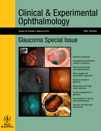
CLINICAL AND EXPERIMENTAL OPHTHALMOLOGY
Fostering Global Dialogue in Eye Care ScienceCLINICAL AND EXPERIMENTAL OPHTHALMOLOGY is a leading peer-reviewed journal published by Wiley, renowned for its commitment to advancing the field of ophthalmology. With an impressive impact factor reflecting its high-quality research contributions, this journal is ranked in the Q1 category both in Medicine (miscellaneous) and Ophthalmology, signifying its crucial role in shaping contemporary ophthalmic research. It boasts a remarkable position in the Scopus Ranks, standing at Rank #13 out of 137 in the field of Medicine and Ophthalmology, placing it within the 90th percentile among its peers. Having been in circulation since 1979, this journal encompasses a broad scope of topics that aim to disseminate groundbreaking findings and stimulate dialogue among researchers, clinicians, and students alike. It is easily accessible to a global audience, embodying the principles of open access, making valuable research available to all. For anyone seeking to stay at the forefront of ophthalmology, CLINICAL AND EXPERIMENTAL OPHTHALMOLOGY is an indispensable resource that fosters knowledge and innovation in the ever-evolving landscape of eye care.

GRAEFES ARCHIVE FOR CLINICAL AND EXPERIMENTAL OPHTHALMOLOGY
Exploring Innovations in Ocular HealthGRAEFES ARCHIVE FOR CLINICAL AND EXPERIMENTAL OPHTHALMOLOGY, published by Springer, has established itself as a premier journal in the field of ophthalmology since its inception in 1870. With an ISSN of 0721-832X and an E-ISSN of 1435-702X, this esteemed journal enjoys a notable impact in the research community, ranking Q1 in Ophthalmology and Q1 in Sensory Systems, as per the latest 2023 journal category quartiles. GRAEFES Archive is dedicated to advancing our understanding of ocular health through both clinical and experimental studies, making it an essential resource for researchers, practitioners, and students alike. Its comprehensive scope covers various aspects of ophthalmic science, reflecting its long-standing commitment to quality and excellence. Although it currently operates on a subscription basis, the journal's significant Scopus rankings—24th out of 137 in Ophthalmology—underscore its relevance and influence within the scientific community. Situated in Germany, with its address in the United States, this international journal continues to shape the discourse on vision science and therapeutic innovation.
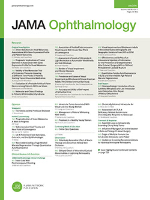
JAMA Ophthalmology
Transforming Eye Health Through Rigorous ResearchJAMA Ophthalmology, the premier journal in the field of ophthalmology, is published by the esteemed American Medical Association. Renowned for its rigorous peer-review process and commitment to advancing eye health research, JAMA Ophthalmology holds a prestigious position in the scientific community, boasting an impressive impact factor and ranking as Q1 in the category of Ophthalmology. With a Scopus rank of #3 out of 137 in its field and a remarkable 98th percentile, the journal serves as an invaluable resource for researchers, healthcare professionals, and students dedicated to the ophthalmic sciences. Readers can explore a wealth of cutting-edge findings, clinical studies, and review articles that not only contribute to the sustainable advancement of ophthalmic knowledge but also foster innovative approaches in patient care. As we converge into 2024, the journal continues to embrace open access principles, ensuring that groundbreaking research is readily available to a global audience, enhancing collaborative efforts and furthering the development of the ophthalmology discipline.

EUROPEAN JOURNAL OF OPHTHALMOLOGY
Shaping the Future of Eye Care and ResearchThe EUROPEAN JOURNAL OF OPHTHALMOLOGY, published by SAGE PUBLICATIONS LTD, is a leading international journal in the field of ophthalmology, dedicated to advancing the understanding and treatment of ocular diseases and disorders. With an ISSN of 1120-6721 and an E-ISSN of 1724-6016, the journal aims to provide a platform for innovative research, critical reviews, and comprehensive studies that span the diverse aspects of the discipline. As part of its commitment to disseminating high-quality research, the journal is indexed in Scopus, achieving an impressive rank of #47 out of 137 in the Medicine - Ophthalmology category, indicating its strong impact within the academic community. With a current impact factor that places it in the Q2 quartile for both Medicine (miscellaneous) and Ophthalmology as of 2023, it offers researchers and practitioners access to important findings and developments in eye health. The journal's converged years from 1991 to 2024 exemplify its longstanding commitment to the field, making it an essential resource for anyone looking to stay at the forefront of ophthalmological research.
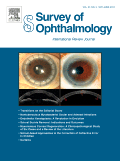
SURVEY OF OPHTHALMOLOGY
Unveiling the Latest in Eye Health ResearchSURVEY OF OPHTHALMOLOGY is a premier journal published by Elsevier Science Inc, dedicated to advancing knowledge in the field of ophthalmology. With an impact factor reflective of its high-quality research—ranking 7th out of 137 in the Scopus category for medicine and ophthalmology, this journal maintains a prestigious Q1 categorization in its field for 2023. Since its inception in 1956, the journal has provided comprehensive reviews and original articles covering various aspects of ophthalmic research and clinical practice, supporting the ongoing education of researchers, professionals, and students alike. While open access options are not available, the journal remains an essential resource for the latest developments, discoveries, and expert insights that shape the future of eye health. Based in the United States, at STE 800, 230 Park Ave, New York, NY 10169, the journal continues a legacy of excellence in ophthalmology until 2024 and beyond, making it a pivotal element of scholarly discourse in this vital medical discipline.
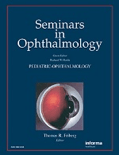
Seminars in Ophthalmology
Connecting Research and Clinical ExcellenceSeminars in Ophthalmology is a prestigious journal published by Taylor & Francis Inc, dedicated to advancing knowledge in the field of ophthalmology and related medical areas. Established in 1986, this journal has consistently provided a platform for high-quality research and insights, supporting the community with its impactful publications. With an impressive ranking of #55 out of 137 in the Ophthalmology category, the journal currently holds a Q2 quartile in both ophthalmology and miscellaneous medicine as of 2023, reflecting its significant contribution to the discipline. Researchers and practitioners can access a wealth of information covering a comprehensive range of topics, bolstering both clinical practice and academic inquiry. While not an open-access publication, Seminars in Ophthalmology remains a crucial resource for advancing ophthalmic research, fostering collaboration, and disseminating valuable findings in a rapidly evolving specialty.
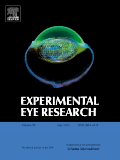
EXPERIMENTAL EYE RESEARCH
Exploring the Frontiers of Visual MechanismsEXPERIMENTAL EYE RESEARCH, published by Academic Press Ltd - Elsevier Science Ltd, is a preeminent journal dedicated to advancing the fields of ophthalmology and neuroscience. With a history of insightful publications dating back to 1961, this journal serves as a critical platform for researchers, professionals, and students interested in the cellular and molecular mechanisms underlying visual processes. The journal boasts impressive rankings, including being placed in the top quartile (Q1) of both the Ophthalmology and Sensory Systems categories, and is recognized in the 2nd quartile (Q2) for Cellular and Molecular Neuroscience. With an impact factor reflecting its significant contribution to the field, EXPERIMENTAL EYE RESEARCH is a valuable resource that promotes the exchange of innovative research and ideas essential for understanding the complexities of eye function and vision-related disorders. Researchers looking to publish their findings or stay abreast of the latest studies will find this journal a vital component of their academic toolkit.
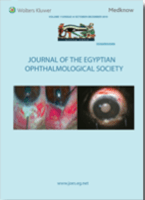
Journal of the Egyptian Ophthalmological Society
Connecting practitioners and researchers for better vision.Journal of the Egyptian Ophthalmological Society is a premier academic journal dedicated to advancing the field of ophthalmology through high-quality peer-reviewed research. Published by Wolters Kluwer Medknow Publications, this journal plays a critical role in disseminating vital findings and innovations in eye care, fostering knowledge exchange among researchers, practitioners, and educators worldwide. Since its transformation to Open Access in 2014, it has significantly enhanced the accessibility of eye health information, thereby broadening its impact on the global scientific community. With an ISSN of 2090-0686 and an E-ISSN of 2314-6648, the journal aims to tackle contemporary issues in ophthalmology, including clinical practices, public health, and technological advancements in eye care. The journal's commitment to excellence ensures that it remains a vital resource for those looking to contribute meaningfully to this dynamic and crucial field.